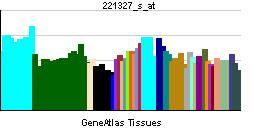Species Human Entrez 5956 | Human Mouse Ensembl ENSG00000102076 | |
 | ||
Aliases OPN1LW, CBBM, CBP, COD5, RCP, ROP, opsin 1 (cone pigments), long-wave-sensitive External IDs MGI: 1097692 HomoloGene: 68064 GeneCards: OPN1LW | ||
Red-sensitive opsin is a protein that in humans is encoded by the OPN1LW gene.
Function
This gene encodes for a light absorbing visual pigment of the opsin gene family. The encoded protein is called red cone photopigment or long-wavelength sensitive opsin (LWS opsin or L opsin). Contrary to popular belief, the human red-sensitive opsin's peak response is not in the red region of the visual spectrum; its peak sensitivity is 560 nm, which corresponds to a "yellowish-green" color, i.e. between green (530 nm) and yellow (580 nm). Its name as the "red" opsin reflects the fact that it is more sensitive to red than the other two human opsins. The red opsin also has a secondary response in the violet high frequencies.
Opsins are G-protein coupled receptors with seven transmembrane domains, an N-terminal extracellular domain, and a C-terminal cytoplasmic domain. This gene and the medium-wavelength opsin gene are tandemly arrayed on the X chromosome and frequent unequal recombination and gene conversion may occur between these sequences. X chromosomes may have fusions of the medium- and long-wavelength opsin genes or may have more than one copy of these genes. Defects in this gene are the cause of partial, protanopic colorblindness.
